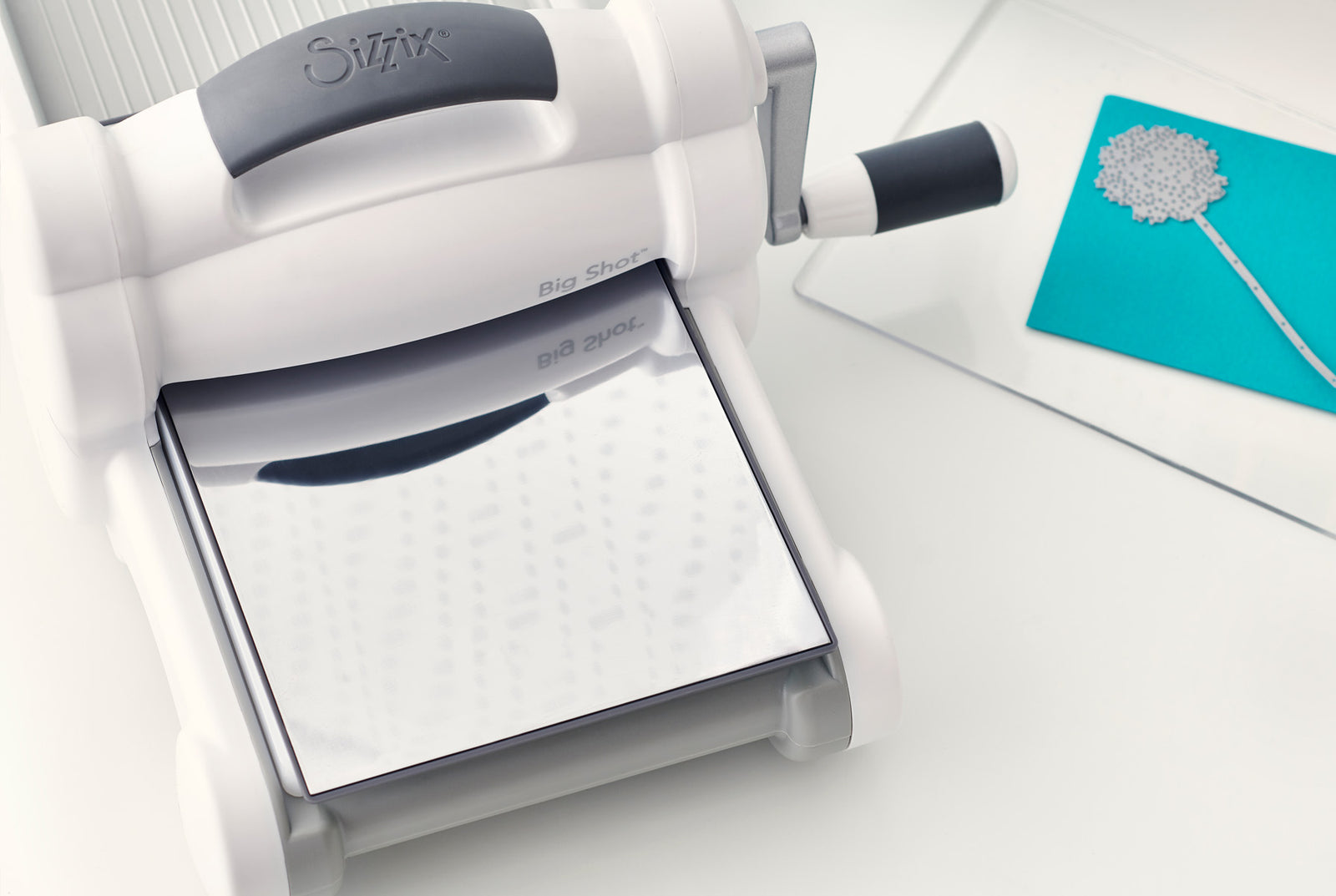30 day change of mind returns available
30 day change of mind returns available
Add description, images, menus and links to your mega menu
A column with no settings can be used as a spacer
Link to your collections, sales and even external links
Add up to five columns
Add description, images, menus and links to your mega menu
A column with no settings can be used as a spacer
Link to your collections, sales and even external links
Add up to five columns
Understanding Cutting Dies: A Beginner's Guide to Die Cutting Machines
June 19, 2023 1 Comment

What Is Die Cutting?
Die cutting is the process of using a die cutting machine and a metal die to cut a shape or design repeatedly, professionally and easily.
Die cutting dates back to the mid-1800’s when it was invented to streamline the time-consuming and tedious shoe-making process. It meant that cobblers were able to mass-produce the soles of shoes, marking the beginning of standardised sizing.
The 1950’s saw the invention of smaller die cutting machines used in the education sector and from 2000 onwards die cutting machines for crafters were developed and became popular for use by card makers and scrapbookers. These machines were smaller and more portable which made them fit perfectly on craft tables. Soon, cutting dies became a staple piece of crafting equipment.
What Are Cutting Dies?
A cutting die is a tool made of thin metal designed to cut paper, cardstock, felt, cork sheets, thin fabric or vinyl when used in conjunction with a die cutting machine. The range of cutting dies available is limitless! There are shapes, frames, sentiments, letters and numbers.

Think of a cutting die as performing a similar job to a cookie cutter. A cookie cutter is usually a plastic shape designed to cut through cookie dough to create repeatable shapes. A cutting die has a similar purpose but is thinner and made of metal so that it can cut through paper and card.
One side of the metal die is the cutting edge and with pressure, it will cut through the desired material.
What Is A Die Cutting Machine?
A die cutting machine is required to use cutting dies. It has a combination of rollers and cutting plates. With the application of pressure, you can cut the intended material.
The die cutting machines used in crafting can be manual, which means the die is fed through the machine via turning the crank or handle. Alternatively, there are electronic machines where the process of feeding the die through the machine is automated. The electronic machines are typically more expensive, but they are great for people who find the manual die cutting machines a strain on their wrists or arms. One thing to note is that an electric die cutting machine is noisier than a manual machine due to the motor.
Popular die cutting machine brands include Sizzix, Spellbinders and Crafter’s Companion. Each brand has varying sizes and features so you will need to take into consideration the size of your dies and the thickness of your materials.
How to Use a Die Cutting Machine
Each die cutting machine is different so it’s best to check the requirements of your machine. For now, we will give you general guidelines on the die cutting process.
To die cut with a manual machine, you need to ‘sandwich’ your chosen die and material between the acrylic cutting pads.
For example, if you are using a die to cut from cardstock then follow these steps:
- Take an acrylic cutting pad
- Place your cardstock down on the cutting pad
- Place the die cutting edge down on the cardstock
- ‘Sandwich’ all of this between a second acrylic cutting pad
- Pass it through the die cutting machine by turning the crank or handle and the metal rollers.
This pulls your ‘sandwich’ through by applying pressure to create the cut.
If you are using an electric die cutter, create your ‘sandwich’ as described above. The only difference with this machine is that rather than a crank or handle, it has a motor that feeds it through the rollers automatically.
Your die cutting machine can also be used to emboss materials such as cardstock. To do this, follow the same ‘sandwich’ process. Grab an embossing folder and place the second acrylic cutting pad on top. Then, pass this through the die cutting machine. The end result is a lovely raised pattern from the embossing folder on your cardstock.
Die Cutting Tips
- For finer or more detailed dies, you may benefit from taping the die to your cutting material to ensure that it does not move when being passed through the machine. You can use an adhesive tape.
- Your acrylic cutting pads will end up marked with general wear, so don’t panic when you first see this happen!
- Sometimes a die might not cut all the way through, so before removing it from the ‘sandwich’ run the cutting pads through the machine a second time.
- Sometimes you will need to use a shim: typically a few pieces of cardstock that are used to fill any extra space on top of your cutting pads and add extra pressure.
- To ensure even wear of your cutting pads, place your craft dies all around your cutting pads, not just always in the middle.
- It is advisable to replace your cutting pads every 6-12 months if you use your machine regularly.
Storage For Your Cutting Dies
Uniquely Creative has a range of clear storage pockets that are perfect for safely storing your die sets and keeping them organised. You could store similar dies together to make it easy to find them. For example, you could have a specific storage pocket for floral dies, another for frames, another for shapes and so on.
Die cutting has become increasingly popular in papercrafts such as card making and scrapbooking as it enables crafters to create their own DIY embellishments, stickers and chipboard elements.
There are so many different types of dies. We recommend starting with some basic shapes and sentiments and then gradually building up your collection. Have fun!
Related Questions
What are cutting dies used for?
Cutting dies are used in crafting to cut paper, cardstock and other materials. The die-cut shape is then used in papercrafts. By using a metal die and the die cutting machine, the cutout shape will have a professional finish that can be repeated time and time again.
Do you need a machine to use cutting dies?
You do need a machine to use cutting dies. Through a series of rollers and cutting plates, the die cutting machine creates the pressure needed to cut shapes.
1 Response
Leave a comment
Newsletter
Join our mailing list and never miss an update …

Judy
July 09, 2023
I have been using a big shot for years but it was still great to read the blog to ensure I am doing everything correctly.